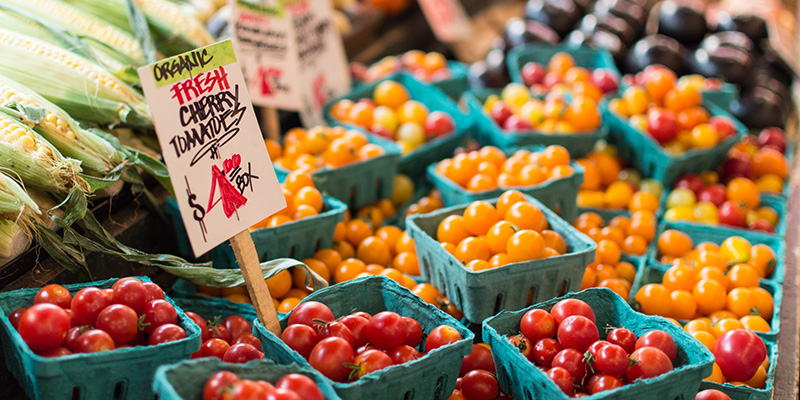Spring is upon us and so are the months that will bring us the most fresh, flavorful produce of the year! Get to know your neighborhood and community better this year: talk to your baristas, grocers, and small business owners. Search popular local Facebook pages and groups in your area. Find the new spots that will be hosting farmers and growers regularly, and plan part of your weekly time and budget to support these hard-working business people! Here are just a few great reasons to shop local:
Four Benefits of Buying Local Produce This Season
1) Fresh foods may provide more nutrients.
Shopping from growers who just loaded their truck with yesterday’s harvest will undoubtedly provide a fresher product than many of the imported produce items we select in grocery stores. Does that mean more vitamins, minerals, and antioxidants? Maybe.
Heat, light, and oxygen eventually destroy the nutritional value of fresh produce. More time spent in transit from the field to the fridge brings a higher risk of nutrient loss for fresh foods. Foods may have several days, weeks, or even months in transit and storage before getting onto grocery shelves, where they may sit for another few days before ending up in your fridge. Large agricultural productions attempt to minimize this with more technological advancements.
But in the seasons where fresh local food is abundant, this is entirely in your control! Many growers will be happy to talk to you about their harvesting schedule, how fresh their produce is, and how best to store it to maintain flavor and minimize waste.
2) Local growers are preserving the biodiversity of our crops.
Large agricultural growers continue to breed plants to select for characteristics that will keep produce looking uniform, brightly colored, tasting identical, and hearty enough to stand up to long periods of storage. In doing this, the plants often lose other genetic characteristics that might have more unique looks and tastes, but also provide different vitamins, minerals, and antioxidants.
This is where small, independent growers come in. They have the ability to grow smaller batches and experiment more with different varieties of kale, tomatoes, squash, and so on. When growers have unique items for sale they often provide information about texture and taste of the food, as well as ways to prepare it.
Diversifying the types of produce you eat weekly will help optimize your overall nutrient intake, open your palette to new tastes, – and of course, provide a little more knowledge about the food you eat!
3) It will probably taste better.
As mentioned earlier, large agricultural productions are bound to providing foods that taste the way the consumer expects them to. A strawberry should taste the right amount of sweet, spinach should have a very specific texture, etc. The storage and preservation process also results in a certain dullness of flavor.
Not so with local produce! Growers are able to choose varieties specifically for richer and more unique flavors. Spend a weekend taste testing a handful of your favorite produce staples, comparing them to your typical grocery brand. Any difference you find will deepen your enjoyment of that food, and hopefully encourage more frequent selection of those fruits and veggies. If you’ve never done a tomato taste test – you are in for a treat!
4) It’s probably cheaper.
This can vary from grower to grower, but local produce is often cheaper than what would be found in the grocery store. Dollar for dollar the comparison is sometimes accurate, but in quantity you’ll usually get more at a local stand. The reason? Growers know that the produce they present today is only going to go downhill from there; the best chance they have to sell it is right then, and so you’re likely to walk away with an amazing haul.
Keep in mind that heirloom varieties may be pricier due to their popularity: I once accidentally purchased a $20 bag of 5 tomatoes (read the signage!). But nothing says value like walking away with 4 cucumbers for a dollar!








